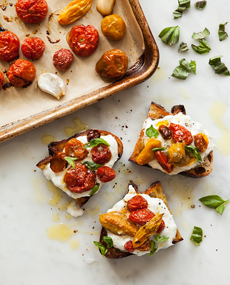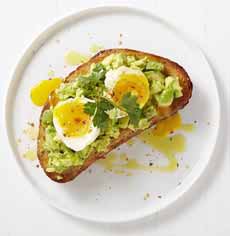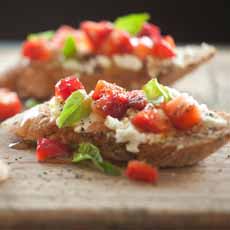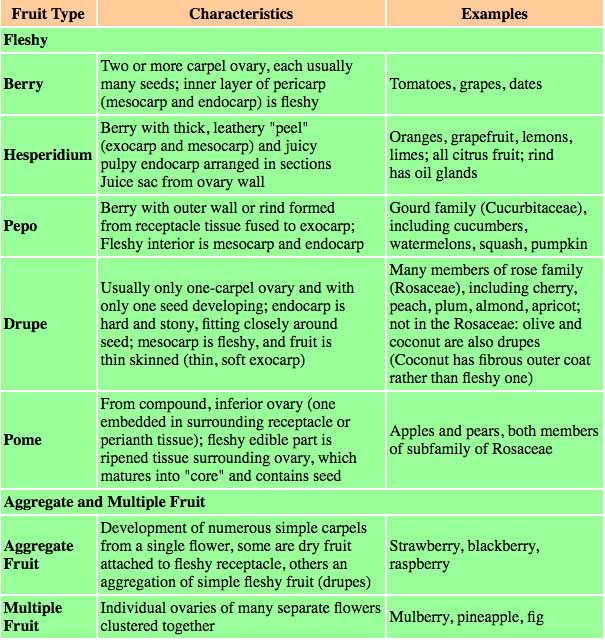TIP OF THE DAY: Crostini For Breakfast & Lunch
 [1] Tomato and burrata crostini (recipe below—photo courtesy Good Eggs).
|
If you like to crunch on toast for breakfast, consider crostini: toast using Italian bread or a rustic loaf (peasant bread), topped with more interesting ingredients—or a combination of them—than American breakfast toast. For those who think of crostini only as an accompaniment to a glass of wine break or cocktails, nota bene that it can be the main dish for breakfast or brunch. It’s toast with toppings: cheeses, fruits, meats, seafood, spreads, vegetables. You can choose sweet or savory…or one of each. Here are some ingredients that work for breakfast and lunch: You can make the tomatoes a day in advance. Then, put the ingredients together in a few minutes. Ingredients 1. PREHEAT the oven to 225°F. Spread the tomatoes and garlic cloves on a baking sheet and toss with a few tablespoons of olive oil. 2. BAKE for 2½ to 3 hours, or until tomatoes just begin to shrivel. 3. BRUSH the bread slices with oil, and toast or grill until golden brown. Rub with roasted garlic. 4. DIVIDE the burrata over toasts and top with tomatoes, basil, flaky salt, and another drizzle of olive oil. Coarse salt is a larger-grained sea salt crystal, with grains the size of kosher salt. The grains are crushed to make fine sea salt. Flake salt is naturally evaporated sea salt that forms snowflake- or pyramid-like grains. Examples include those from the Maldon River in England, Anglesey off the island of Wales, New Zealand, and Australia. When used as a garnish, coarse and flake salts provide a crunch. Check out the different types of salt. |
|
|
FOOD 101: FRUIT GROUPS Because we’re food geeks, we think of foods as part of their parent groups. We love to learn the relationships between plants, and how seemingly unrelated food plants can be close cousins. That’s why you’ll often see the Latin taxonomy after the English name; for example, basil (Ocimum, basilicum family Lamiaceae). The taxonomy of plants and animals was first developed by the great Swedish botanist, Carl Linnaeus and published in 1735 (the zoological component came later). The nomenclature comprises seven main “ranks”: kingdom, phylum or division, class, order, family, genus, species. You studied it in 7th-grade biology. To simplify the fruit category, here’s a chart of the main fruit groups—in English, as opposed to the Latin names. Not only can it deepen your understanding of food; it’s a fun game to play as you wheel down the supermarket fruit aisle. Point at apples and say “pome,” point at peaches and say “drupe,” etc. Well, it’s our idea of fun.
Chart courtesy College of William and Mary. |
||



